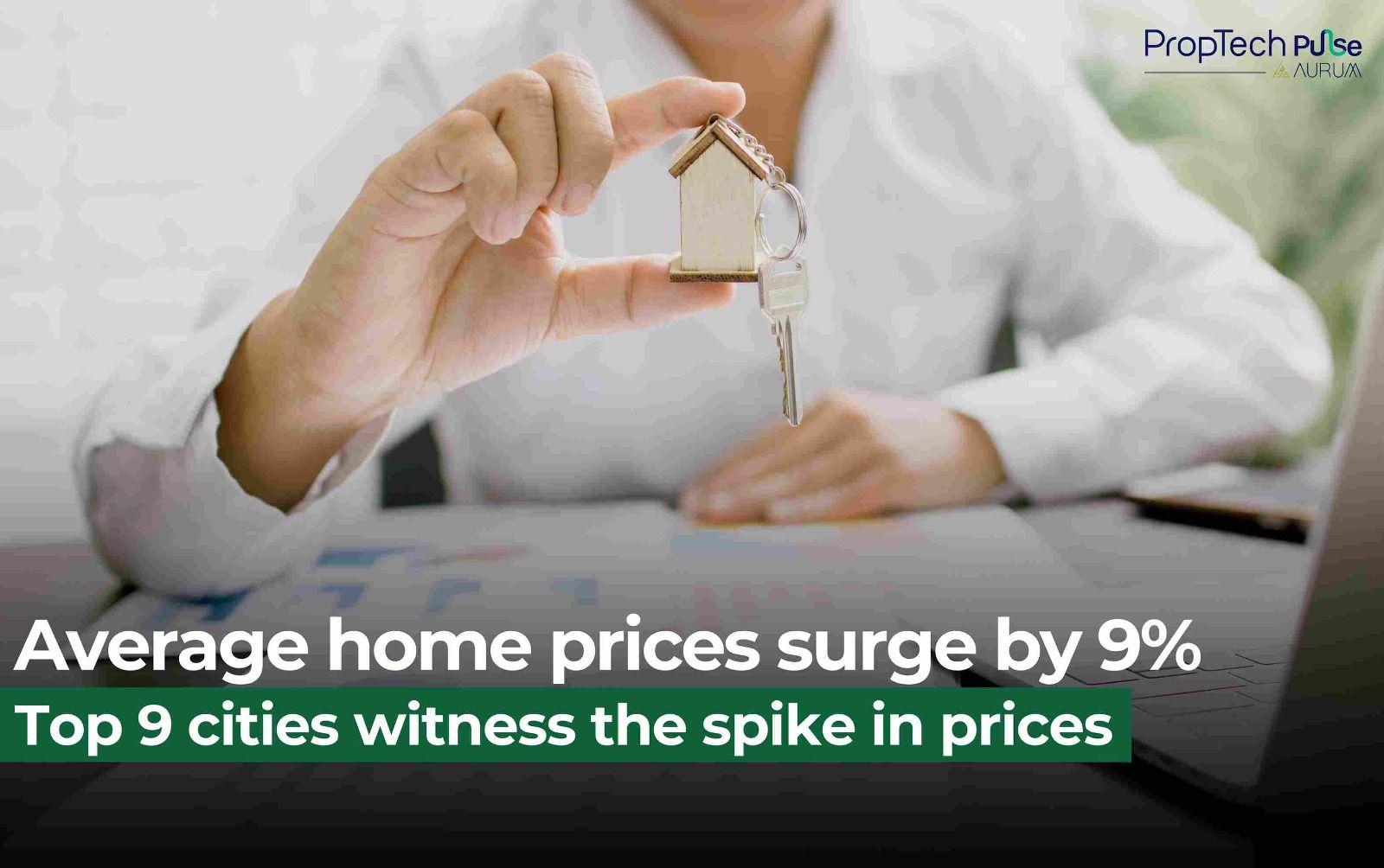
Rising Home Prices Across Key Cities
In an intriguing turn of events, the Indian real estate market has seen a notable rise in the average launch prices of homes, particularly in the country's top nine cities. According to a report by PropEquity, a well-known data analytics firm listed on the NSE, home prices in these cities surged by 9% in the financial year 2024-25. The average price per square foot now stands at ₹13,197, compared to ₹12,569 in the previous year.
Rising Home Prices Across Key Cities
The cities contributing to this growth include Bengaluru, Chennai, Hyderabad, Kolkata, Delhi-NCR, Mumbai, Navi Mumbai, Thane, and Pune. Among these, Kolkata led the charge with an impressive 29% increase in home prices, followed by Thane at 17%, Bengaluru at 15%, and Pune at 10%. On the flip side, both Mumbai and Navi Mumbai saw a decline of 3% in housing prices.
In the past two fiscal years, home prices across the country have experienced a dramatic rise. Bengaluru witnessed the highest price growth at 44%, followed by Kolkata (29%), Chennai (25%), Thane (23%), and Delhi-NCR (20%). Other cities such as Pune (18%), Navi Mumbai (13%), Mumbai (11%), and Hyderabad (5%) also posted impressive growth in home prices during this period.
Supply and Demand: A Mixed Picture
Despite the rise in home prices, there’s been a noticeable dip in housing sales. Sales dropped by 23% to 1,05,791 units, while supply also dipped by 34% to 80,774 units between January and March of 2025. This trend highlights the subdued demand-supply scenario that persists in the market.
Insights from Industry Experts
Several industry leaders weighed in on the reasons behind the price rise and what lies ahead for the real estate sector.
Samir Jasuja, Founder-CEO of PropEquity, noted that the surge in housing prices could largely be attributed to rising input costs over the past few years, including land, labor, and construction materials. “While demand and supply have been subdued, these increased costs have firmly contributed to the appreciation in housing prices,” Jasuja explained.
Garvit Tiwari, Director & Co-Founder of InfraMantra, pointed out that the demand for good quality projects remains strong, especially in regions like NCR, driven by micro-markets in Gurugram such as the Dwarka Expressway and Southern Peripheral Road. These areas are poised for outperformance compared to other cities due to enhanced infrastructure support.
Meanwhile, Umesh Gowda, Chairman and Founder of Sanjeevini Group, shared that the Bengaluru market continues to thrive, especially in the city’s eastern parts like Gunjur and Varthur. These areas, located near key IT hubs, have witnessed soaring demand, driven by their proximity to well-established social infrastructure and connectivity.
Resilience and Future Prospects
Abhishek Raj, Founder & CEO of Jenika Ventures, emphasized that the 9% YoY increase in residential prices reflects the resilience of the market and growing consumer confidence. “The real estate sector continues to demonstrate robust demand, driven by better economic activity, improved infrastructure, and a positive outlook for long-term growth.”
On the other hand, Amit Goenka, MD & CEO at Nisus Finance, pointed to the simultaneous increase in prices and drop in sales. He warned that any further economic slowdown might lead to a correction in the market, while an upswing in GDP could result in a further rise in prices. “The current rise is mainly due to the upward push in input costs,” Goenka added.
Dr. Mohit Ramsinghani, CXO of a real estate firm, suggested that this price surge signals a healthy and evolving sector, highlighting the increasing competitiveness of the market.
Ravi Ramesh Pilani, Managing Director at Pilani Realty, believes that the surge is largely driven by India’s growing economy and the improving purchasing power of homebuyers. With rising financial stability and aspirations, more people are now investing in real estate as a long-term asset. Looking ahead, Tier 2 and Tier 3 cities are expected to play a significant role in driving future growth.
Conclusion: A Bright Future for Real Estate
In conclusion, the 9% increase in average home prices across India’s top nine cities demonstrates the strong recovery and growth prospects of the real estate sector. While sales may have dipped, the demand for quality housing, combined with the rapid expansion of infrastructure and economic improvements, suggests that the Indian real estate market has a promising future ahead.
Unlock the Latest in Real Estate
News, Infographics, Blogs & More! Delivered to your inbox.
“Data that drives action. Insight that inspires action. Technology that empowers action.“
“Data that drives action.
Insight that inspires action.
Technology that empowers action.“









